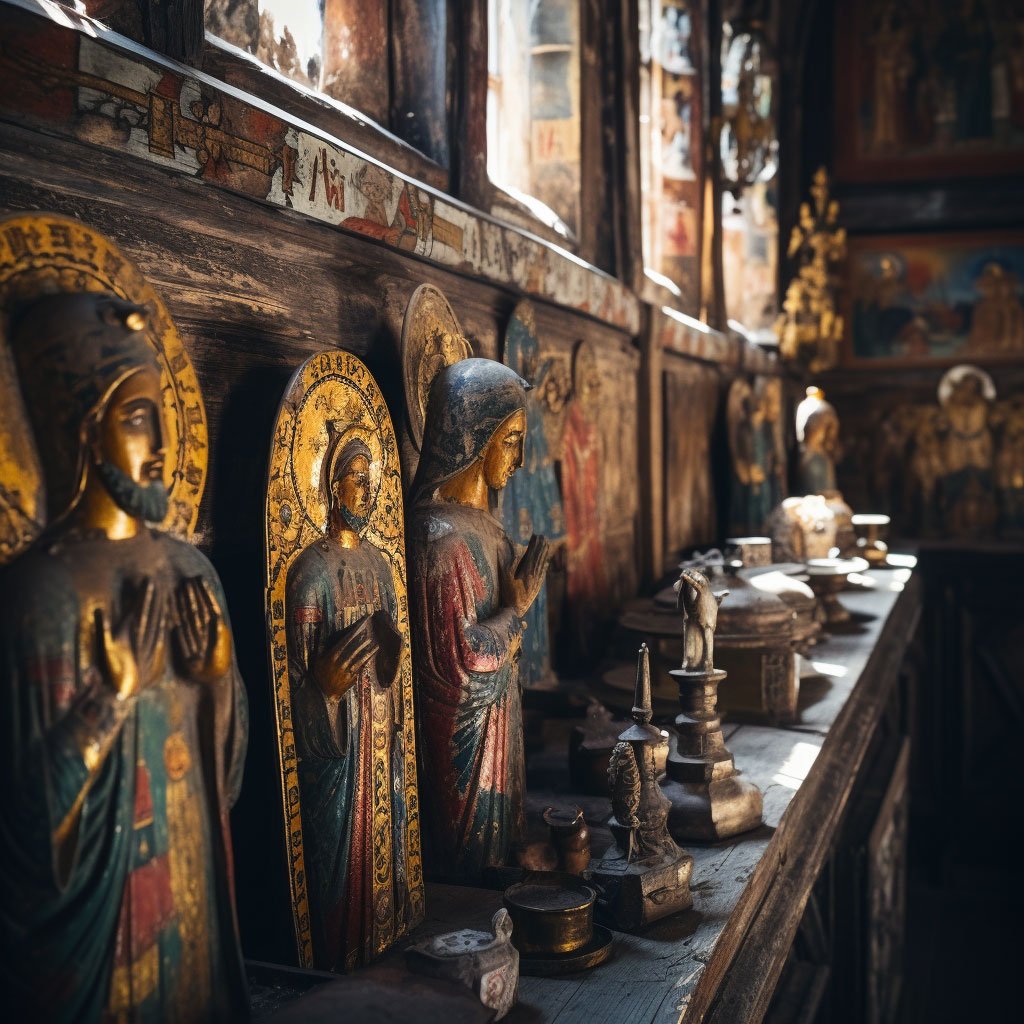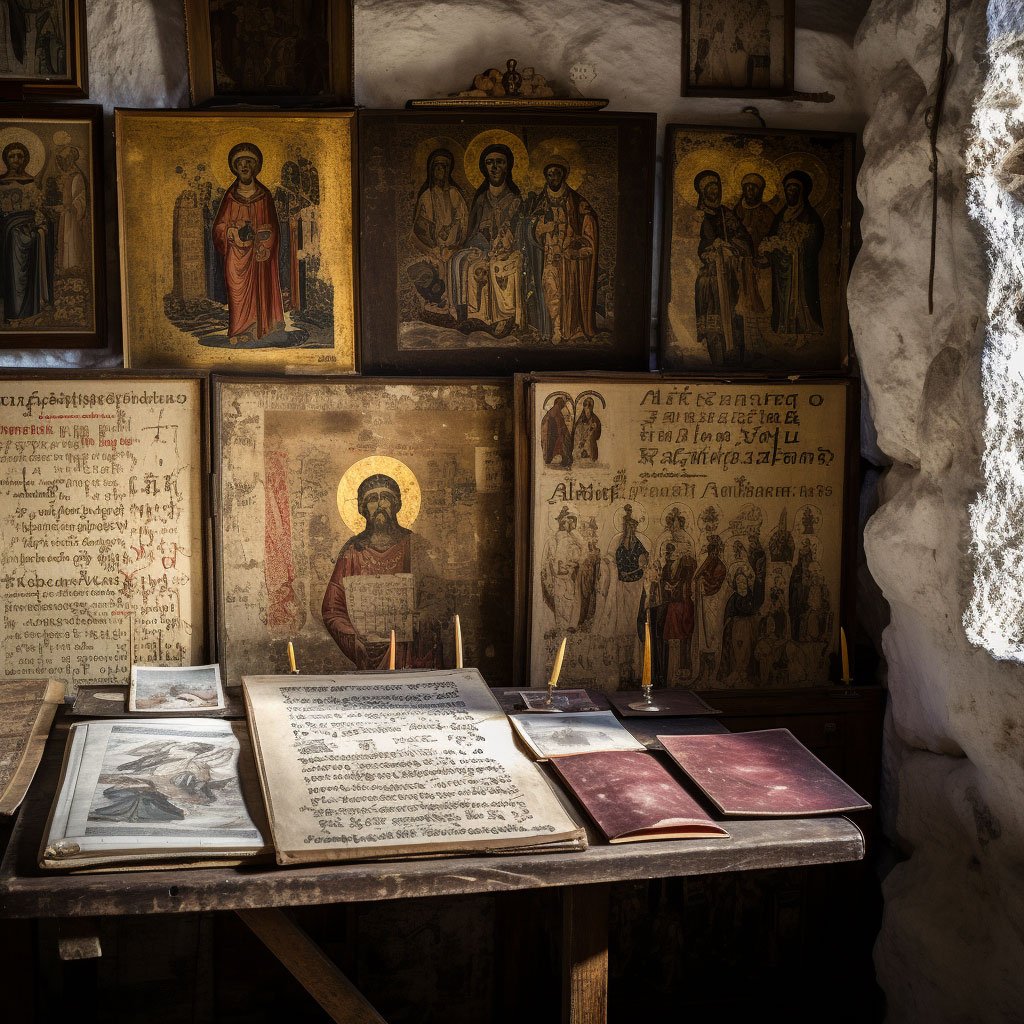Ethiopia, with its ancient Christian tradition, is home to a rich monastic culture. From the island monasteries of Lake Tana to the remote cliff monasteries in Tigray, these spiritual sanctuaries offer a unique insight into the country’s religious heritage. This article will take you on a journey through the monastic landscape of Ethiopia, exploring the serene beauty of Lake Tana’s island monasteries and the awe-inspiring cliff monasteries of Tigray.

The Island Monasteries of Lake Tana: A Spiritual Sanctuary
Our exploration of Ethiopia’s monastic culture begins with the island monasteries of Lake Tana. Located in the northwestern part of the country, Lake Tana is the largest lake in Ethiopia and is renowned for its historic island monasteries. These monasteries, some of which date back to the 14th century, are a testament to the country’s rich Christian heritage.

The island monasteries of Lake Tana are known for their beautiful religious paintings, ancient manuscripts, and sacred relics. Each monastery has its unique architectural style, with round, thatched-roof churches being a common feature. The monasteries, with their tranquil setting and spiritual ambiance, offer a serene retreat from the hustle and bustle of modern life.

Visiting the island monasteries of Lake Tana is a spiritual journey that offers a glimpse into the monastic life. The boat ride to the islands, with the serene beauty of Lake Tana as the backdrop, is a tranquil experience in itself. The monasteries, with their ancient churches and spiritual tranquility, offer a unique opportunity to delve into the religious traditions of Ethiopia. The religious paintings, with their vibrant colors and intricate details, are a visual treat, offering insights into the religious beliefs and artistic traditions of the Ethiopian Orthodox Church.
The Cliff Monasteries of Tigray: A Spiritual Ascent
Our journey through Ethiopia’s monastic culture continues in the rugged landscapes of Tigray, home to some of the country’s most remote and awe-inspiring monasteries. Perched high on cliffs and accessible only by challenging trails and steep ascents, these monasteries are a testament to the enduring faith and determination of the monks who inhabit them.

The cliff monasteries of Tigray, some of which are believed to date back to the 6th century, offer a unique monastic experience. The journey to these monasteries, often involving a trek through rugged terrains and a climb up sheer cliff faces, is as much a spiritual journey as it is a physical challenge. The monasteries, with their simple yet beautiful churches, offer stunning views of the surrounding landscapes, making the challenging journey worthwhile.
Abuna Yemata Guh: A Monastery in the Sky
One of the most famous cliff monasteries in Tigray is Abuna Yemata Guh. Carved into a cliff face at a height of over 2,500 meters, the monastery is renowned for its stunning frescoes and breathtaking views. The journey to the monastery, involving a steep climb and a walk along narrow ledges, is not for the faint-hearted. However, the stunning frescoes inside the rock-hewn church and the panoramic views of the surrounding landscapes make the challenging journey a rewarding experience.

The frescoes of Abuna Yemata Guh, believed to date back to the 15th century, are some of the finest examples of Ethiopian religious art. The paintings, depicting biblical scenes and saints, are remarkably well-preserved, their vibrant colors and intricate details offering a visual treat for art enthusiasts.

Visiting the cliff monasteries of Tigray is a unique experience that offers a glimpse into the monastic life in one of its most extreme forms. The journey to these monasteries, the tranquility of their setting, and the spiritual ambiance, all contribute to a unique spiritual experience.
The Significance of Monastic Life in Ethiopia
Monastic life in Ethiopia is more than just a religious practice; it’s a way of life that has shaped the country’s cultural and spiritual landscape. The monasteries, from the tranquil islands of Lake Tana to the rugged cliffs of Tigray, are centers of learning and spirituality. They serve as custodians of the country’s religious heritage, preserving ancient manuscripts, religious paintings, and sacred relics.

The monastic life, with its emphasis on prayer, meditation, and asceticism, offers a unique insight into the spiritual traditions of Ethiopia. The monks, through their simple and devout lifestyle, embody the spiritual values of humility, devotion, and endurance. These monastic communities, through their spiritual practices and cultural contributions, play a significant role in the religious and cultural life of Ethiopia.
Conclusion: A Journey through Ethiopia’s Monastic Landscape
Our journey through Ethiopia’s monastic landscape, from the serene islands of Lake Tana to the awe-inspiring cliffs of Tigray, has been a spiritual adventure. The encounters with the country’s rich monastic culture, the exploration of ancient monasteries, and the immersion in the tranquility of monastic life, have offered a deeper understanding of Ethiopia’s spiritual landscape.

Ethiopia, with its diverse monastic communities and rich spiritual traditions, is a paradise for spiritual seekers and history enthusiasts. The opportunity to delve into the monastic life, to witness age-old spiritual practices, and to explore ancient monasteries, is a unique experience that goes beyond the aesthetic. This journey has been a testament to the rich spiritual heritage of Ethiopia and a reminder of the significant role monastic life plays in shaping cultures and spiritual traditions.

As we conclude our journey through Ethiopia’s monastic landscape, we carry with us not just the memories of tranquil islands and rugged cliffs, but also a deeper appreciation for the monastic traditions that form an integral part of the country’s cultural fabric. The monastic traditions of Ethiopia, preserved and practiced over centuries, are a vibrant expression of the country’s spiritual identity and a source of national pride.

Beautiful!